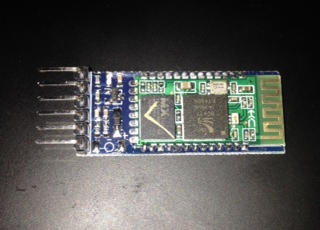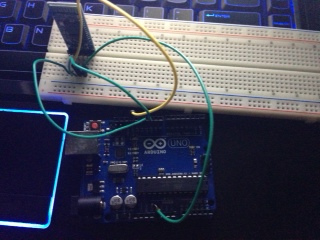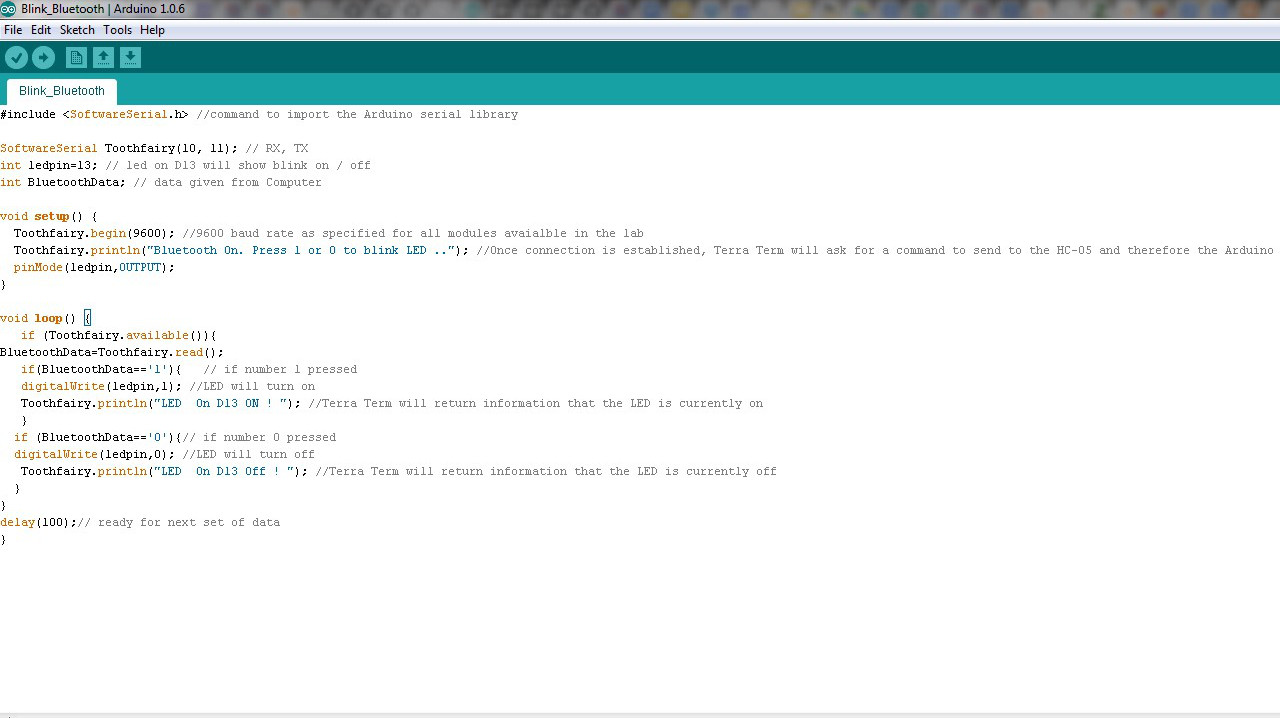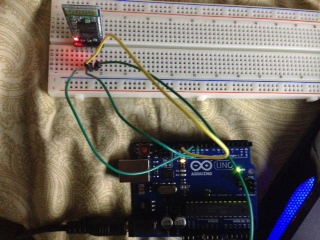
So once again here is the bluetooth module I chose to use, the HC-05. I picked it for a couple of reasons. One major reason is that after a lot of digging around on the internet, this particular device is what consistently came up as recommended for use with the Arduino, and since I'm hoping to use a Fabduino to power my final project with the Arduino software that's perfect for my use. I also spent a lot of time reading about audio signals. I've learned that I should be able to send music serially to the bluetooth module because it is capable of handling pulse code modulation, which is the digital way of streaming the music. So for next week my goal will be to get the bluetooth to take that input and output it to the Arduino.

Here's the HC-05 all wired up. As you can see I'm using an Arduino Uno this week to connect the two of them. Next week I plan to do this again but with a Fabduino instead, and additionally I would like to be processing audio signals instead of just running the bluetooth version of 'blink LED' which is where I'm getting at now.

Screenshot of the Arduino code and such. I also found this business online called Tera Term that I downloaded for this. I just did some reading that was talking about how Windows' built in command line programs are crap. Honestly I just figured it was worth a shot to get something else on my computer and see how it works. Interestingly enough in the download package there was some stuff in there called 'cygterm' which I'm sure is essentially cygwin for this shell. Once upon a time I thought I was going to do all my class page updating in cygwin, and then it was a nightmare so I learned how it works in the regular command prompt and my life has been infinitely easier. Anyway, about to give this a run and see how it goes. I believe the point is to have a shell for a serial monitor that is a bit more user friendly than using the powershell settings built in to the Windows command prompt. Reading this information on Sparkfun clarified things for me a little bit: https://learn.sparkfun.com/tutorials/terminal-basics/all#serial-terminal-overview-
